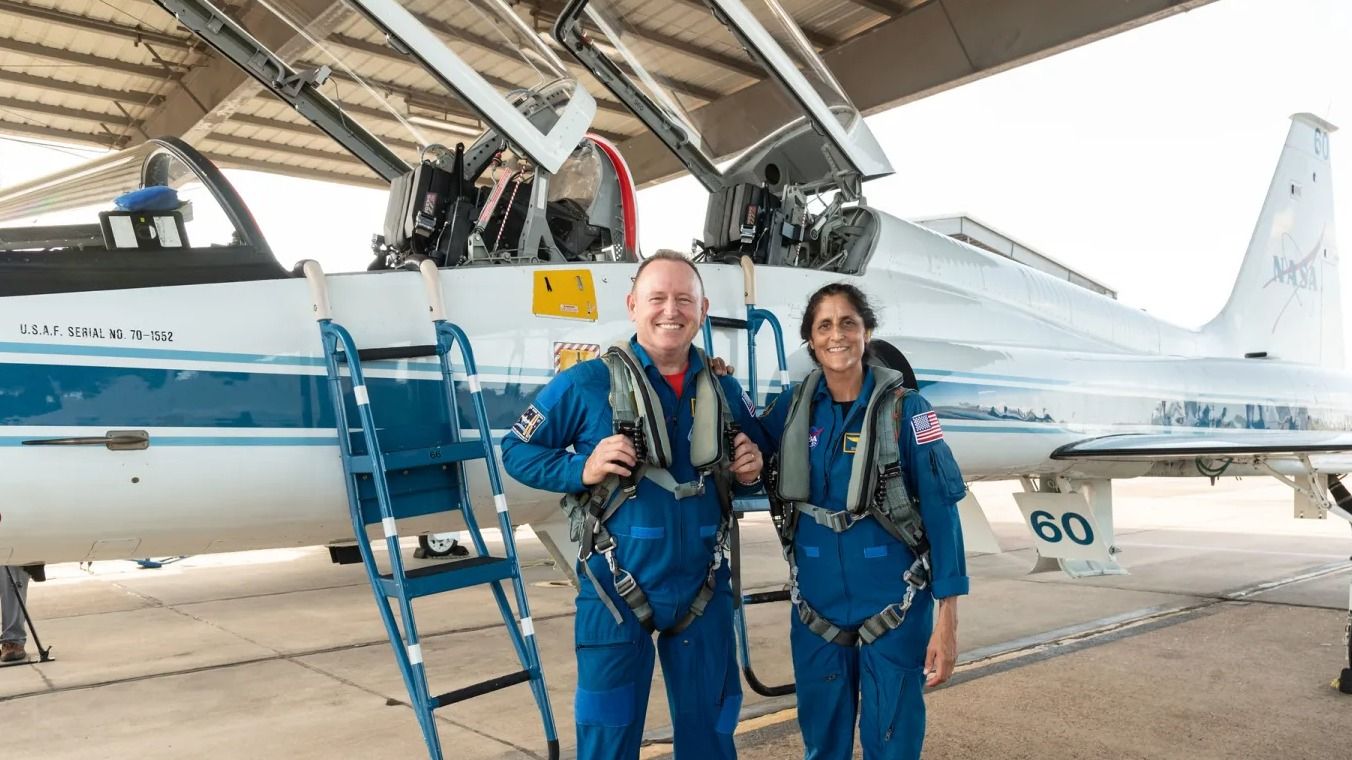HOUSTON — The United States’ second private crew-carrying spacecraft is finally ready to bear astronauts.
NASA and Boeing teams recently cleared for liftoff the Crew Flight Test (CFT) of Boeing’s Starliner, which is set to launch on May 6. Starliner will be the second spacecraft funded by the agency’s commercial crew program to carry astronauts, following SpaceX’s Crew Dragon, which made its crewed debut in May 2020.
“We are really excited to have this second transportation system up and available to us,” Steve Stich, program manager for NASA’s Commercial Crew Program, said in a press conference here at the agency’s Johnson Space Center on March 22.
Stich emphasized that the program had wanted, all along, two very different spacecraft with different procedures and teams to support them, to have a backup in case one ship is sidelined due to a safety or other issue. “We’ve seen in the past the importance, I think, of having this dissimilar redundancy, [because] it’s always tough to fly into space,” he said.
Related: 1st Boeing Starliner astronauts are ready to launch to the ISS for NASA (exclusive)
CFT will bear two NASA veteran astronauts and former Navy test pilots into space, Butch Wilmore and Suni Williams. They will shake down the spacecraft during a “developmental” mission, meaning that a few changes may happen to procedures, teamwork or the spacecraft following “lessons learned” from this flight. Assuming all goes well, Starliner will then be certified for six-month missions to the ISS next year.
SpaceX and Boeing both received contracts from NASA in 2014 to ferry astronauts to and from the International Space Station (ISS), with SpaceX receiving a contract valued at $2.6 billion and Boeing one at $4.2 billion. SpaceX began running its operational missions in 2020 and has sent 11 such crews to the ISS so far (eight for NASA and three for Axiom Space, a private company that organizes short-term stays on the complex.)
Starliner has flown two uncrewed missions in space. The capsule’s astronaut debut has been delayed multiple times due to technical issues, most of them experienced during its first test flight in 2019, which failed to meet up with the ISS as planned. Starliner’s second test flight to the orbiting lab, in May 2022, met all of its major objectives. Further delays arose more recently, due to issues with Starliner’s parachute system and the fact that much of its wiring was wrapped in flammable tape.
During press activities here in Houston, Boeing, NASA and the astronauts repeatedly emphasized that those earlier problems have all been addressed. Should CFT go as planned and all schedules hold, Boeing will launch the operational crewed mission Starliner-1 to the ISS for a six-month stay in early 2025, with more flights to follow.
Related: Boeing begins fueling Starliner capsule ahead of 1st astronaut launch
Despite the Starliner delays, the US is about to have two private crew-carrying spaceraft at its disposal, which will provide ISS backup in many forms. Dana Weigel, then deputy program manager for the ISS, pointed out in the March 22 press conference that one of the program’s goals is to keep the station continuously crewed. The station’s life support systems assume “constant throughput” from humans, among other items, and the astronauts do preventative maintenance on the complex as well.
“When we talk about having multiple providers, [that’s] why it’s so important for us to have that continual capability,” added Weigel, who was promoted to program manager for the ISS on April 7.
Incidentally, these are not the only crewed spacecraft flying to and from the ISS; Russia’s Soyuz spacecraft has been doing so ever since the complex joined its first two modules in 1998. Soyuz and NASA’s space shuttle used to trade off astronaut missions back in the day; the shuttle retired in 2011.
Soyuz had to go it alone for nearly a decade after the space shuttle retired, but that’s far from ideal; NASA wants backup for safety and policy reasons. For example, a Soyuz spacecraft in 2022 sprung a coolant leak that essentially forced Russia to ship a new Soyuz vehicle to space as rapidly as possible for the three astronauts needing a ride home.
In the meantime, mission managers squeezed an extra seat on board a docked SpaceX Dragon, in case there was trouble on the ISS that forced evacuation,. (Russian tests suggested the remaining two astronauts manifested on Soyuz could safely fly home on the coolant-less spacecraft.) That backup was not necessary, but all the additional spacecraft changes forced the Soyuz astronauts to double their stay to a year, while awaiting their relief crew.
Related: How many astronauts can fly on a SpaceX Crew Dragon capsule?

Weigel specifically pointed to this leak situation as “a great example where … we were able to leverage contingency capability, in this case with Crew Dragon.”
While SpaceX is highly reliable, backups are always appreciated; Weigel noted that all Dragons fly on a single rocket, the Falcon 9 or F9, which is also used to launch SpaceX Starlink satellites and other missions.
“If there was a problem with F9, for example — and we had to stand down for a while to understand the problem — if we had another vehicle, we could continue flying,” she said.

This all assumes, of course, that Starliner passes all of its testing. Mark Nappi, vice president and program manager of Boeing’s commercial crew program, outlined for reporters several key milestones the company is tracking.
Boeing wants to make sure the CFT astronauts are comfortable and can work with all the equipment at all phases of the mission, which means key systems like life support need to work properly. Thruster performance will be evaluated during dynamic events — like ISS approach, rendezvous and docking — along with the manual and auto navigation systems. Starliner will also need to perform well during its approximate week at the ISS, when it goes into “quiescent” mode to save on energy.
“Then we’ll undock,” Nappi continued. “We’ll confirm our manual piloting system; we’ll be able to go into the backup mode and let Butch and Suni use the hand controllers to make sure it acts as expected.” From there, he continued, Starliner will be evaluated on its performance during reentry and landing, including aspects such as its heat shield, parachute and human recovery operations.
Stich pointed to another benefit of commercial crew: allowing each of the contractors (Boeing and SpaceX) to choose how they want to operate as long as all certification and safety requirements are met.
SpaceX, for example, has all of its mission control operations at its headquarters in Hawthorne, California. Boeing chose to split its teams between JSC and a mission control center in Florida. Because Boeing is co-located with NASA employees here at JSC, Stich emphasized, there is an advantage.
“It’s allowed NASA to keep some of those critical flight operations skills, training the crews and then operating the vehicle for launch and landing phases in those critical phases of flight,” Stich said. That experience will be useful for cross-training, he said, as NASA prepares to certify its Lockheed Martin-led Orion spacecraft for moon missions as soon as 2025, with Artemis 2.









